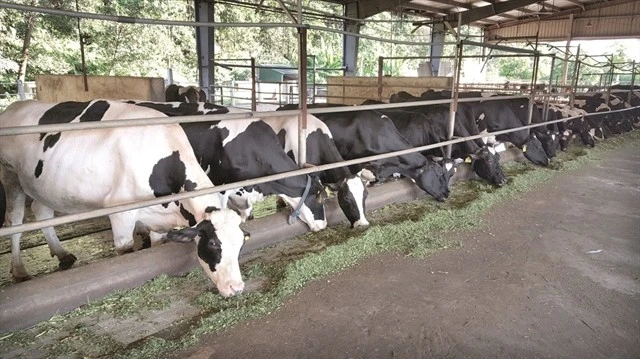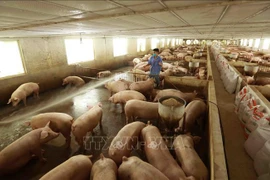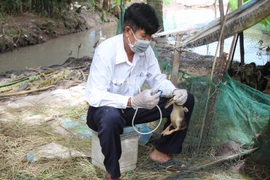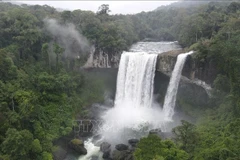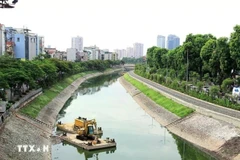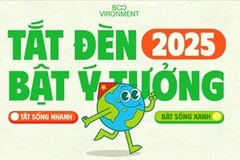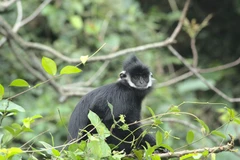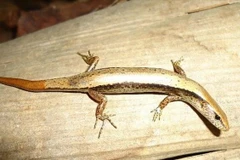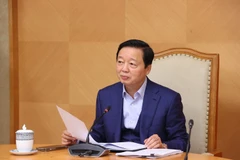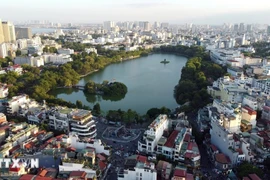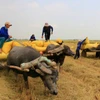Hanoi (VNS/VNA) - The livestock industry is facing growing pressure to reduce emissions and transition towards more sustainable production methods.
This is not just an environmental issue but also one that affects public health and the economy and is necessary for the sustainable development of the agricultural sector.
The industry is one of the largest sources of global greenhouse gas emissions.
The production process generates three main greenhouse gases: methane (CH4), nitrous oxide (N2O), and carbon dioxide (CO2), of which methane is particularly significant because it has a heat-trapping potential 25 times stronger than carbon dioxide.
Dr Nguyen The Hinh, vice head of management board of agriculture projects, said that in 2022, Vietnam had eight million cows and buffalos, 14.7 million pigs and 380 million poultry.
According to the approved Livestock Strategy, by 2030, Vietnam will have about ten million cattle, 30 million pigs and about 670 million poultry, Hinh said.
The results of the greenhouse gas inventory show that the livestock industry emits about 18.5 million tonnes of CO2e annually, accounting for 19% of agricultural emissions, he said.
According to the expert, the largest methane emissions usually occur in concentrated livestock farms that use a lot of water for cleaning barns, such as pig and dairy farming, which results in animal manure mixing with water, creating conditions for anaerobic bacteria to thrive.
Meanwhile, Associate Professor Dr Cao The Ha from the Vietnam-Japan University said that pig farming is the leading source of greenhouse gas emissions. An average pig emits 0.36kg of organic manure, while greenhouse gas emissions are 1.8kg CO2 per kilogramme of pig manure.
By 2030, the number of pigs is expected to reach 30 million, which would result in approximately 5,913,000 tonnes of CO2 emissions per year.
Livestock waste is considered a valuable input resource with great potential for developing biogas energy, Ha said.
Biogas produced from livestock waste could be a key solution in promoting sustainable energy in the future. Currently, thousands of biogas systems have been installed across Vietnam, mainly at the household level for cooking purposes.
Additionally, some decentralised biogas power generators have been installed on livestock farms as a replacement for diesel-powered generators.
However, biogas digesters still contribute to air pollution.
For example, in Ha Nam province, some local officials have reported that 30% of pig-raising households using biogas digesters release odours and discharge waste improperly, leading to severe water pollution in areas near livestock farms.
While making a significant contribution to the economy, the livestock industry also poses challenges to environmental protection and green gas emission control.
Vice President of the Vietnam Clean Water and Environment Pham Thi Xuan said that the livestock industry contributes over 25% of the agriculture sector’s GDP. It is one of the fastest developing industries, even during COVID-19.
Thus, it is considered a key industry needing to shift from small-scale farming to larger, commercial-scale farming, Xuan said. However, she said those bigger commercial operations also challenge environment protection and greenhouse gas emission control.
The rapid increase in livestock populations, especially cattle and pigs, and the coexistence of small-scale and industrial farms have complicated the issue of greenhouse gas emissions from livestock.
Livestock production, particularly the digestive process of cattle, contributes significantly to methane emissions.
Intensive livestock farming also contributes significantly to greenhouse gas emissions, particularly methane and nitrous oxide.
The expansion of livestock farming is often associated with converting forests into pastures or cropland for animal feed production, which further contributes to deforestation and climate change, Xuan said.
Using fertilisers in agricultural activities also contributes to the emission of potent greenhouse gases.
Another significant environmental concern related to livestock farming is water pollution caused by animal waste that seeps into nearby water sources, leading to pollution and the degradation of aquatic ecosystems.
Transportation of animal feed also contributes to climate change. Feed sources are often transported over long distances to sustain large numbers of livestock, resulting in significant carbon emissions from transport vehicles.
Reducing greenhouse gas emissions from the livestock sector is no longer an option but an urgent necessity in the fight against climate change.
Livestock farming contributes up to 14.5% of total global greenhouse gas emissions, placing severe pressure on the climate system and natural resources.
Experts believe that only by reducing greenhouse gas emissions from livestock can we hope to stabilise the global climate system, protect the environment, and secure a future for the next generations.
This is no longer a distant goal but an essential mission in the battle against climate change.
“It is necessary to define that environment treatment in the livestock industry and greenhouse gas emission inventory is a big deal that requires financial resources, technology and policies,” said Nguyen Xuan Duong, President of the Vietnam Animal Husbandry Association./.
